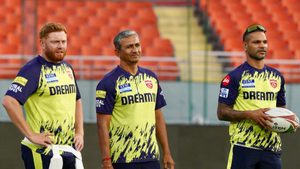In a thrilling contest at the Sawai Mansingh Stadium between Kings XI Punjab and Rajasthan Royals, where the visitors came out victorious, an incident between KXIP captain Ravichandran Ashwin and the opposition opening batsman Jos Buttler became the talk of the town.
 Photo: SPORTZPICS
Photo: SPORTZPICSIn Monday’s match, the off-spinner ran the Englishman out at the non-striker’s end after the batsman nonchalantly trotted out of his crease before the skipper bowled his delivery. While there was some debate out in the middle over the dismissal, the rules suggest that Ashwin was well within in his rights to run the batsman out.
According to Law 41.16, 'the bowler does not have to warn the batsman before attempting to run him out at the non-striker's end before delivery, either verbally or by stopping before removing the bails.'
Ashwin explained that the run out was ‘pretty instinctive’ when asked during the post-match presentation. “I didn’t even load. He left the crease and that’s pretty much it. That has always been my take on it. Because it’s my half of the crease.
“I wasn’t even at the crease and he wasn’t looking at me and he left the crease,” he concluded.
I am hearing a lot of talk about spirit of the game. This law specifically came in because, taking recourse to this very "spirit of the game" batsmen were running 6 inches less to complete a run.
— Harsha Bhogle (@bhogleharsha) March 25, 2019
Don’t blame Ashwin here. As it’s allowed in the Laws of the game.. how is it disrespectful or against the spirit of the game if it’s allowed within the Laws of game?
— Dean Jones (@ProfDeano) March 25, 2019
Blame the administrators for making the Law.
"We can emphatise with the sentiment of the fans but it was a decision taken at the spur of the moment," said KXIP CEO Satish Menon. "It's unfortunate that this situation arose but Ashwin went by the rulebook."
Buttler has been caught out in an incident like this before as well. It happened in the fifth ODI between Sri Lanka and England in 2014, when off-spinner Sachithra Senanayake ran Buttler out, suggesting that Englishman has been well-aware of the rule for close to half a decade.
While the act of ‘Mankading’ is a rare occurrence in cricket, the fact remains that it is perfectly legal, and the onus falls on the batsman to be vigilant of his wicket.
| What is Mankading? |
| The first ever recorded incident of a bowler running out a batsman while in his run-up happened when India's Vinoo Mankad ran out Aussie Bill Brown at the non-striker's end during a Test match in Sydney in 1947. |











